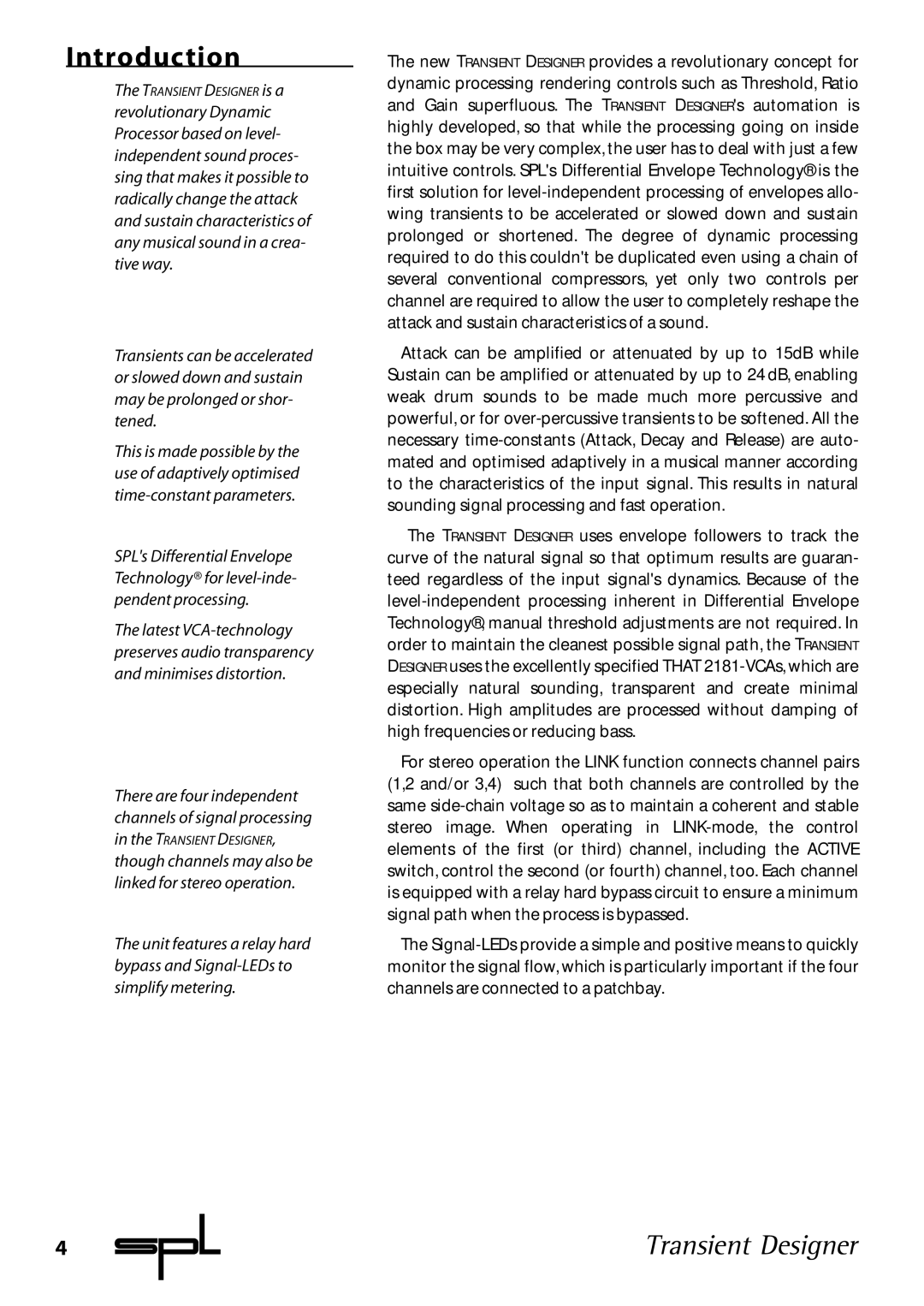9842 specifications
The Sound Performance Lab 9842 is a powerful and innovative piece of audio equipment that stands out in the realm of mixing consoles and sound processing devices. Designed to cater to the needs of recording studios, live sound environments, and broadcast facilities, the 9842 offers a comprehensive array of features that enhance sound quality and user experience.One of the key characteristics of the 9842 is its modular design. This allows users to customize their setup by selecting modules that best fit their workflow and sound preferences. The ability to interchange modules means that the 9842 can adapt to a variety of applications, from simple recording sessions to complex live sound setups, providing ultimate flexibility.
The 9842 features high-quality preamps that are critical for capturing audio with clarity and warmth. These preamps are designed to handle a wide range of audio sources, from microphones to line-level instruments, ensuring that every nuance of sound is faithfully reproduced. The console also boasts low noise levels and high headroom, minimizing distortion and allowing for pristine recordings.
Another standout feature of the 9842 is its digital integration capabilities. With built-in digital converters and USB connectivity, users can easily connect the console to digital audio workstations (DAWs) and other digital devices. This seamless integration simplifies the recording and mixing process, making it easier for sound engineers to achieve the desired results.
In addition to its robust audio processing capabilities, the Sound Performance Lab 9842 includes advanced routing options, which give users the flexibility to customize their signal flow. The console offers multiple auxiliary sends and returns, allowing for effective management of effects and monitoring. Furthermore, the intuitive layout of the control surface ensures that users can quickly access and manipulate settings without getting overwhelmed.
The 9842 is built to withstand the rigors of both studio and live environments, featuring a durable construction that ensures longevity and reliability. Its sleek design not only looks professional but is also ergonomic, making it comfortable for extended use.
Overall, the Sound Performance Lab 9842 is a versatile and high-performance audio solution that caters to the diverse needs of sound professionals. Its combination of modularity, quality preamps, digital integration, and routing flexibility makes it a valuable asset in any audio production setting.

